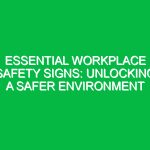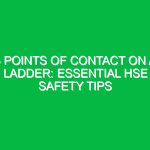Welcome to Our Toolbox Talk
Good morning, everyone! Thank you for gathering today for our Toolbox Talk. Today, we’re diving into a crucial topic that affects each one of us daily—Personal Protective Equipment (PPE). Our focus will be on understanding the importance of PPE in maintaining a safe work Environment, especially within the Health, Safety, and Environment (HSE) context. It’s vital that we all recognize how PPE can protect us from potential Hazards on the job. Let’s get started!
What is Personal Protective Equipment (PPE)?
Personal Protective Equipment (PPE) refers to any equipment worn by workers to minimize exposure to various Hazards that may cause injuries or illnesses. This includes items like helmets, gloves, eye protection, high-visibility clothing, and respiratory protection. In the HSE field, using PPE correctly is a fundamental part of our Safety protocols.
The Importance of PPE in the Workplace
Wearing the right PPE can significantly reduce the risk of injuries. According to the Occupational Safety and Health Administration (OSHA), nearly 70% of workplace injuries can be prevented with the proper use of PPE. Here are a few key reasons why PPE is essential:
- Protection against hazards: PPE acts as a barrier against various risks, such as falling objects, chemical splashes, and Electrical Hazards.
- Compliance with Regulations: Many industries are subject to legal requirements to provide and maintain appropriate PPE. Following these regulations helps avoid penalties and ensures a safer workplace.
- Boosting morale: When employees feel safe, they are more likely to be productive and engaged in their work.
Types of PPE and Their Uses
Understanding the different types of PPE and their specific uses is critical for effective Safety practices. Let’s look at some common types of PPE you might encounter:
1. Head Protection
Helmets or hard hats are critical for protecting against head injuries from falling objects or bumps. Always ensure that your hard hat is properly fitted and meets the required safety Standards.
2. Eye and Face Protection
Safety Goggles and face shields protect against chemical splashes, flying debris, and harmful radiation. It’s essential to select the right eyewear for the specific task at hand. For instance, welding requires tinted goggles to shield against bright sparks and UV radiation.
3. Hearing Protection
In environments with loud machinery, earplugs or earmuffs can help prevent hearing loss. Remember, prolonged exposure to noise levels above 85 decibels can cause irreversible damage. Always check the noise levels in your work area and wear hearing protection as needed.
4. Respiratory Protection
Respirators are vital when working in environments with airborne contaminants. Depending on the hazard, you might need a simple dust mask or a more advanced respirator with filters. Make sure to conduct fit tests before use to ensure proper sealing and effectiveness.
5. Hand Protection
Gloves are essential for protecting your hands from cuts, burns, chemicals, and other hazardous materials. Different tasks require different types of gloves; for example, cut-resistant gloves are necessary when handling sharp tools.
6. Foot Protection
Safety boots with reinforced toes and slip-resistant soles are important for preventing foot injuries. Ensure your footwear is appropriate for your work conditions, especially in slippery or heavy-load environments.
Recognizing Potential Hazards
To effectively utilize PPE, it’s crucial to identify potential hazards in your work environment. Here are some common hazards to be aware of:
- Chemical Exposure: Always know the materials you’re working with and their associated risks. Reference Safety Data Sheets (SDS) for guidance.
- Physical Hazards: Be aware of your surroundings. Look out for moving machinery, overhead loads, and uneven surfaces.
- Environmental Factors: Weather conditions can pose risks. For example, wet or icy conditions increase slip-and-fall hazards.
Best Practices for PPE Usage
To maximize the effectiveness of Personal Protective Equipment (PPE), follow these Best Practices:
- Conduct a Hazard Assessment: Before starting any task, assess the risks and determine the appropriate PPE required.
- Inspect PPE Before Use: Always check your equipment for damage or wear. If you notice any issues, report them immediately and do not use damaged PPE.
- Wear PPE Correctly: Make sure that your gear fits properly and is worn as intended. Incorrectly worn PPE may not provide adequate protection.
- Maintain Your Equipment: Follow the manufacturer’s guidelines for cleaning and maintaining your PPE to ensure its longevity and effectiveness.
- Training and Awareness: Participate in Training sessions to stay updated on new PPE technologies and safety practices. Knowledge is power!
Real-Life Scenarios
Let’s consider a couple of real-life scenarios to illustrate the importance of PPE:
Scenario 1: The Chemical Spill
Imagine you’re working in a lab and accidentally knock over a container of hazardous chemicals. If you’re wearing the proper PPE—gloves, goggles, and a lab coat—you can quickly contain the spill and protect yourself from harmful exposure. Without PPE, the risk of chemical Burns or inhalation would be significantly higher.
Scenario 2: The Construction Site
On a construction site, tools are often in use, and materials are stacked high. If you’re wearing a hard hat, you’re protected from falling objects. However, if you neglect to wear your safety boots and a heavy object falls on your foot, the consequences could be severe. This scenario highlights the importance of wearing PPE consistently and correctly.
Compliance and Regulations
In addition to the safety Benefits, compliance with PPE regulations is a legal obligation. osha mandates that employers provide appropriate PPE at no cost to employees. Additionally, the PPE must meet specific standards, such as ANSI (American National Standards Institute) certifications. Non-compliance can lead to fines and increased liability, but more importantly, it puts you and your coworkers at risk.
Engaging in Discussion
As we wrap up this Toolbox Talk, I encourage everyone to share your thoughts. What challenges do you face regarding PPE use? Are there any specific instances where you felt your PPE was beneficial or inadequate? Your input is essential in fostering a culture of safety within our workplace.
Conclusion
In conclusion, wearing the appropriate Personal Protective Equipment (PPE) is vital for our safety and well-being in the workplace. By recognizing hazards, using PPE correctly, and complying with regulations, we can protect ourselves and our coworkers from potential injuries. Remember, safety is a shared responsibility, and it begins with each one of us.
Thank you for your attention and commitment to safety. Let’s continue to look out for one another and ensure our workplace remains safe for everyone!


